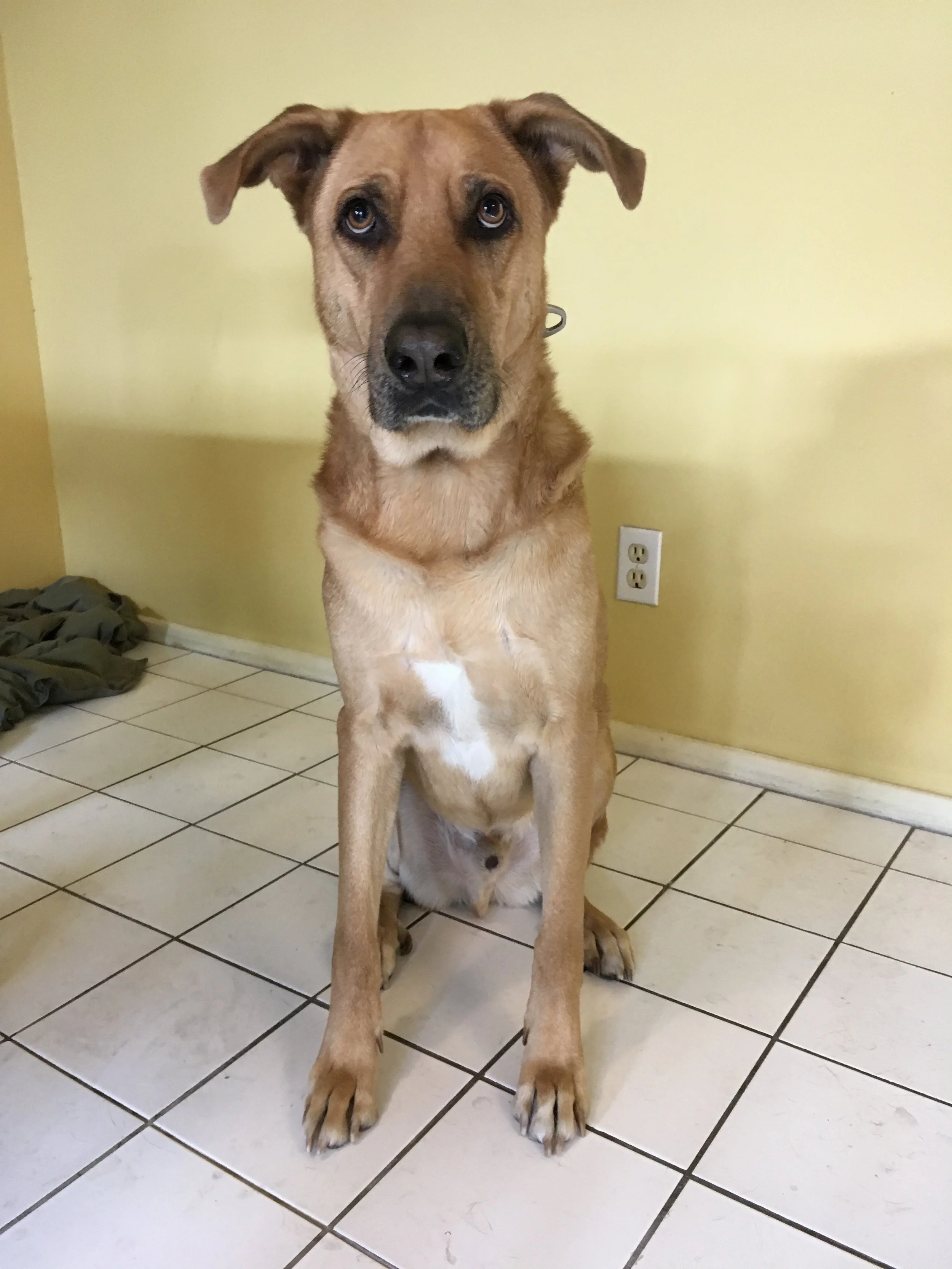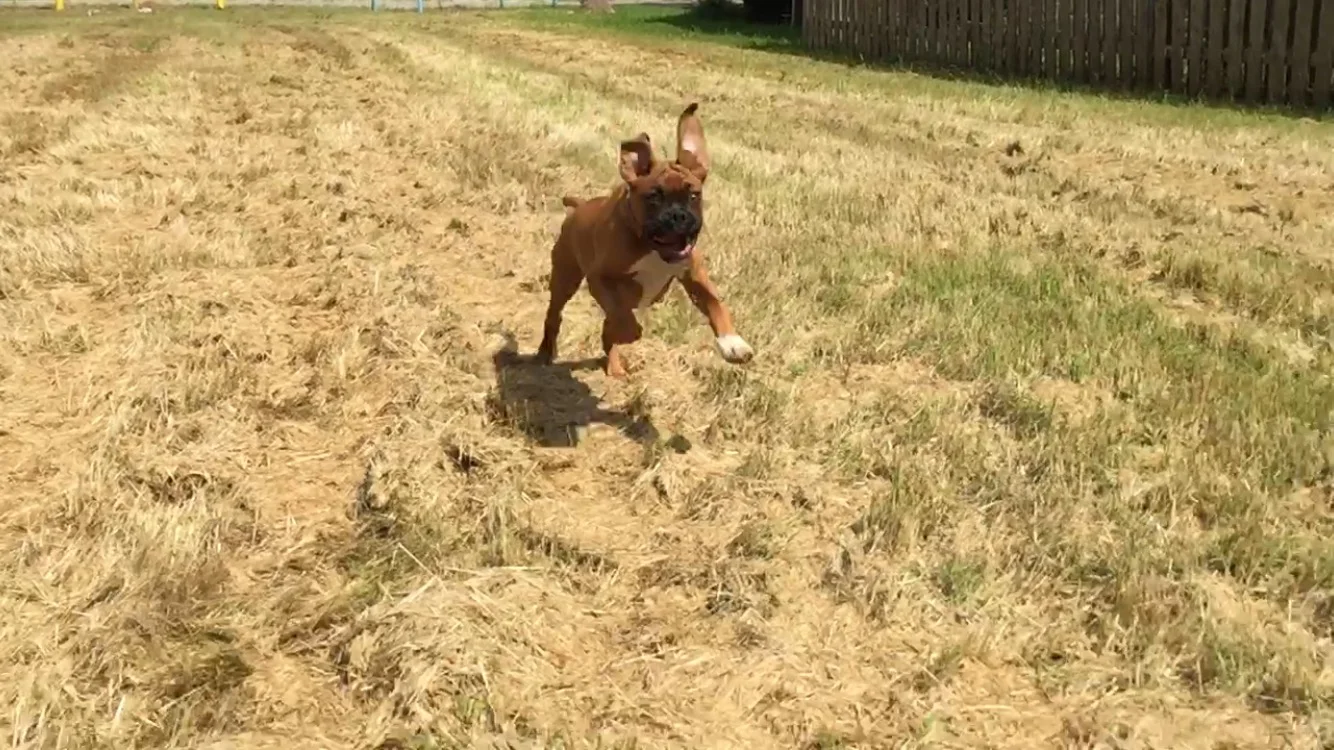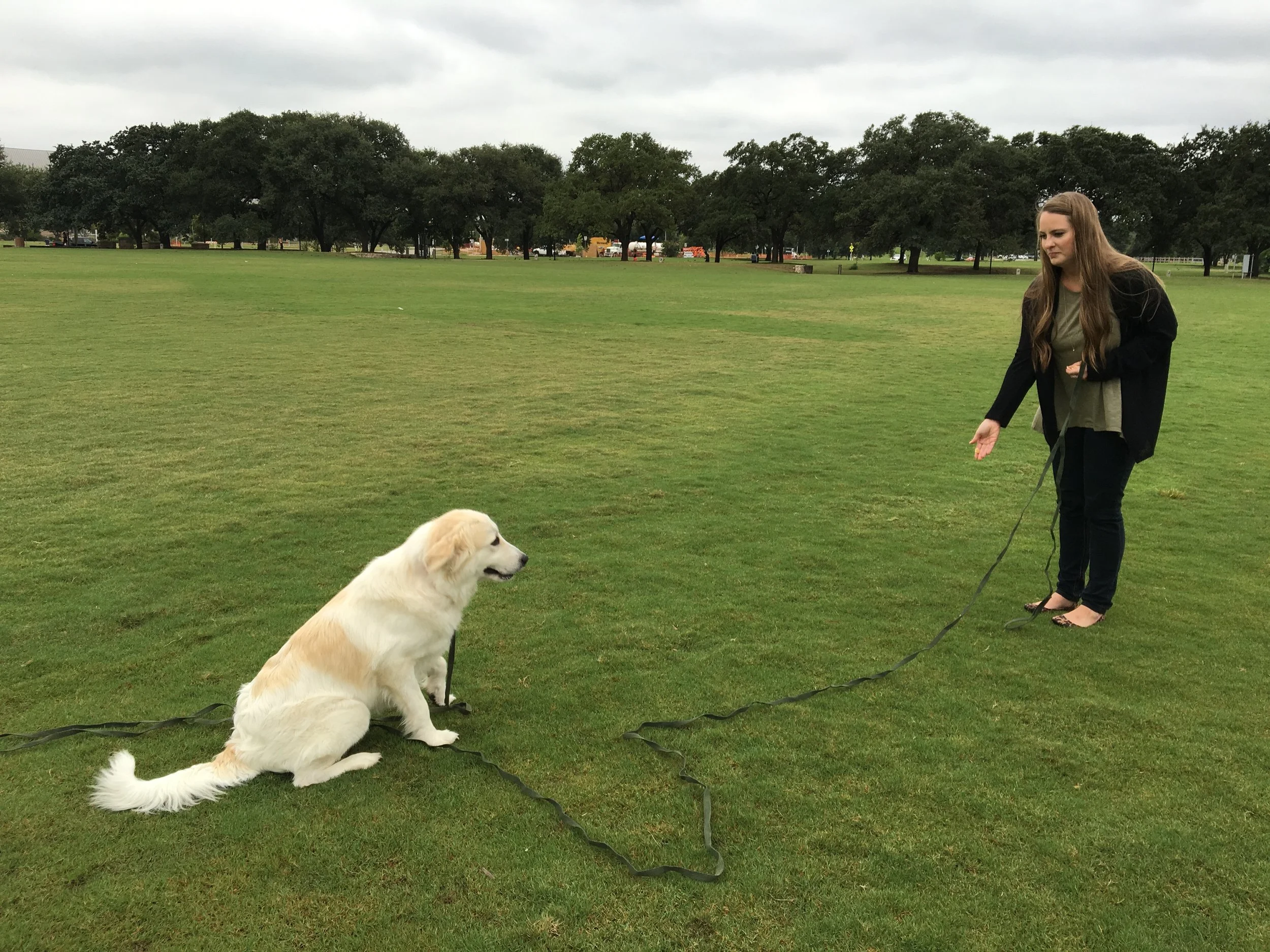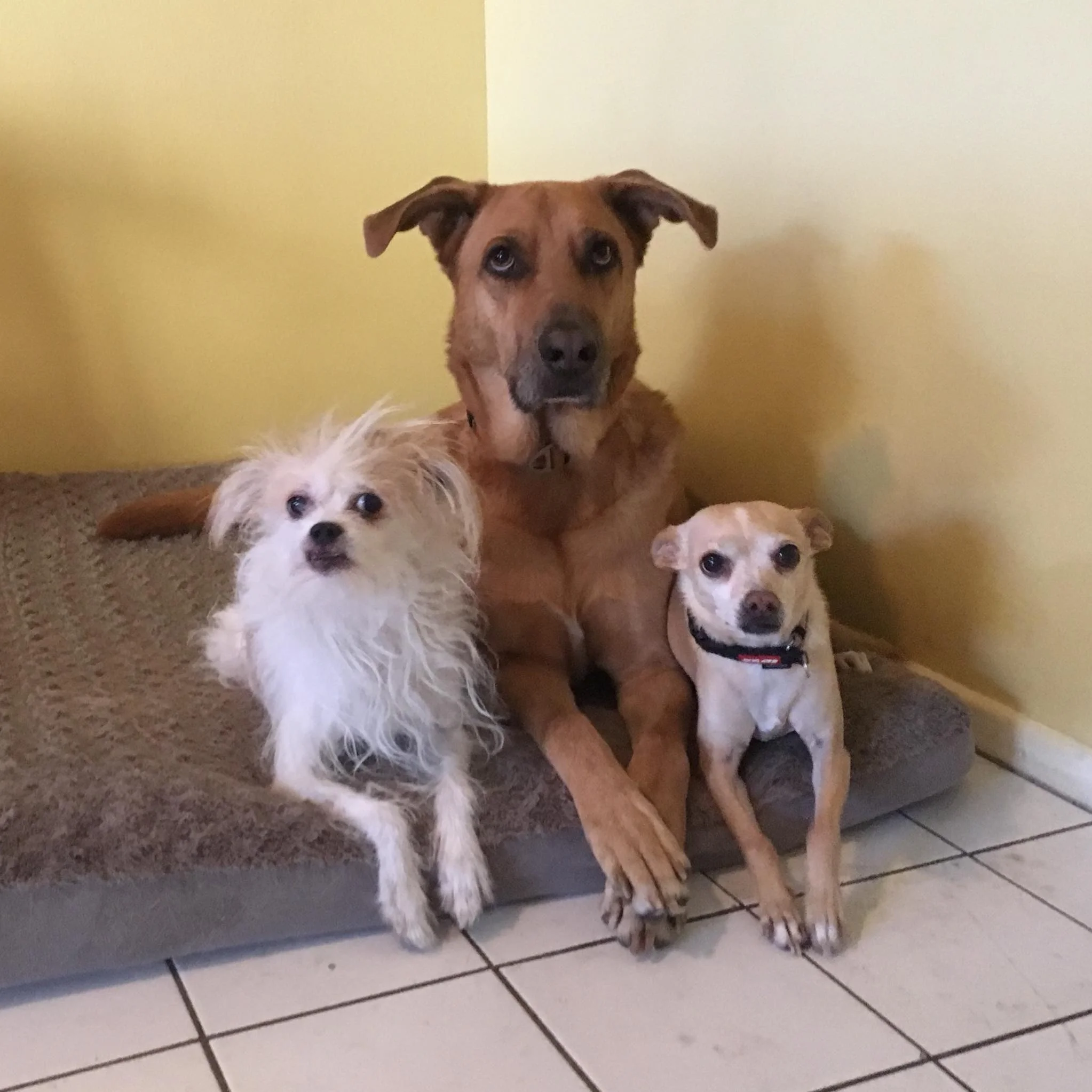Just like babies need to learn how to crawl before they walk, dogs need to learn the basics before they become a well-behaved member of the family.
Isn’t it exhausting when your dog doesn’t listen? They counter-surf, jump up on people, and bark incessantly. Dogs who behave badly can cause a lot of stress in the home.
Believe it or not, teaching your dog to respond to some simple commands will make a world of difference in how well he or she listens to you with everything else.
Here are five basic commands that every dog should know, and instructions on how to do them.
Please note: Puppies and older dogs have short attention spans and tire easily. Keep sessions short for them to keep their attention and minimize distractions.
Sit
The command “sit” is one of the easiest things to teach a dog. A puppy who sits on command is easier to manage until he learns more self-control.
If you teach your dog to sit when the doorbell rings, he’ll be less likely to jump up on visitors when the door opens, or fly out the door after a cat when your guest comes inside.
How to teach your dog to sit:
Get on your dog’s level, either on the floor or in a chair next to him.
Hold a treat close to his nose and let him smell what he needs to work for.
Wait patiently until he sits, and whatever you do, don’t let him take the treat until he is on his bottom.
You can turn your head to left or right if the puppy jumps on you, but don’t turn your back on him or tell him “no” verbally.
When his bottom hits the floor, say “sit” and then give him the treat. you just named what your dog thought is the best way to get the treat.
Add emotional praise like “good sit” or affection.
TIP: Don’t hold the treat so high that your dog tries to jump up for it. Dogs instinctively go for the face. You can also practice this command by saying “good sit” every time your dog’s rump hits the floor. Don't physically force the dog to sit.
Practice this with your dog in short increments, multiple times a day. Reinforce the sit in other situations, like mealtimes. Have him sit before you put his food bowl on the floor, or before you open the door to take him on a walk.
Come
The “come” command is another useful tool for managing annoying behaviors. It can keep a dog out of trouble while giving him a job to do.
It can also save his life by keeping him from running out the door. This foundational skill is one that the two of you will use and refine for the rest of your dog’s life.
How to teach your dog to come:
Start with inside your home.
Grab a few treats and walk backwards while offering your dog one treat.
as your dog walks towards you, that you call COME. Clip a light 30-foot line to your dog’s collar and let him drag it around. Do this in a calm space without a lot of distractions.
Let the dog know that you have yummy treats or a toy that he loves to play with.
After he gets used to having the leash on him, pick up the end not attached to him and hold it.
Hold a treat between your ring finger and middle finger and have your palm open toward your dog.
Start walking backward while holding the leash, and show him the treat.
When your dog starts following you, keep the treat visible and say “come.”
When he comes toward you and tries to take the treat out of your hand, say “yes,” then give him the treat. Give him some praise or affection.
Keep walking backward, and this time, encourage him with “come” when he intends to make contact. Praise and reward him when he does.
TIP: Don’t get in the bad habit of repeating a command if your dog doesn’t respond. Remember the one-word, one-command rule:
Once your dog understands the command, if he does not come, wait about 20 seconds, then go to him and gently guide him to where you want him to be.
If you stand in the yard or at the door and holler repeatedly, he doesn’t understand the command yet.
Never use this command if you want to discipline the dog. If so, you will teach him to associate the command with a negative consequence. If your dog is behaving badly, always go to him rather than calling him to you.
Stay
“Stay” is one of the hardest commands for a dog to learn, but it’s a lifesaver! It can keep your dog from serious harm, and generally make it easier to manage bad behavior.
Dogs prefer to be by your side, so it can be a challenge to get them to stay in one spot while you go somewhere else. The goal of the stay command is to teach your dog that his job is to remain right where he and wait for further instructions.
To work on stay your dog needs to understand five concepts.
Not moving when you move
Not moving for a period of time
not moving when you are in distance
not moving when you are not in sight
waiting for a cue to be released.
How to teach your dog to stay:
Ask your dog to sit comfortably in front of you.
Show a flat palm toward his muzzle and say “Stay”.
Wait few seconds and say FREE and give the dog a treat. repeat few rounds and stretch the duration
Now make a short step back after saying stay wait a few seconds, and say FREE and let him come to you while you offer a treat.
Add more time and distance. if your dog breaks go back 30% and restart.
TIP: Do not Reward him for not breaking his stay by going back!
If he moves, calmly say “Oops” or “Uh uh” and guide him back where he was initially. Do not touch or physically maneuver your dog. Again, give the stay command along with the hand signal, and start over.
Practice this many times every day in different locations.
After rewarding him with praise and a treat for success, teach him a release word, or the word you will say when it’s time for him to be released from the stay. A good release word is “FREE” or “OKAY”
DOWN
The down command is one of the most challenging tasks to perform. For the dog to go into down position means to surrender and wait for an opportunity.
Fearful and inpatient dogs will have more trouble learning this exercise, out of fear of loosing the treat or being to driven to grab the opportunity.
To teach this exercise one needs to be aware of your dog's and own body language and emotional state.
The way I teach my dogs Teach
Down is based, and I want the dogs to do it with a positive experience. How to teach the down task:
Take a high-value treat and place it between your thumb and index finger. Reach out to your dog and let him/her smell what you have between your fingers. Let the dog take 2-3 sniffs but don't let them taste or eat it.
From your nose move it few inches higher, and towards eyes, so the dog will sit to sniff the treat.
When the dog is in SIT position move your "loaded" fingers downwards towards his front paw slowly so the dog can follow the lure. When you reach the paw continue to move your fingers touching the ground and slowly move your hand away from the paw. The dog has two options.
Move his down, and the front body will follow into DOWN POSITION to reach the treat. (YAY!!! Give the treat but say nothing )
Break the sit into stand while his front body goes to a play bow ( restart the exercise and don't give the treat.
Repeat step three A until you get 5 times in a row a continues to move in DOWN position,
Start announcing the move "DOWN" when you start the game.
Repetition, consistency and generalization is how your will master the skills.
TIP- If your dog breaks the DOWN reset the game, move to a different location with better traction and restart the game.
ATTENTION
Preparation:
Take a hot dog and cut it in slices ½ Put it in a zip-lock and threw it in the freezer overnight. This is the only exercise that your dog will be doing nothing for. This exercise is a foundation. It can be paired with any cue, task or job.
Tip: If you have multiple dogs make sure that you only work with one dog at a time, while the other dog is not hear you working with your other dog.
The exercise
Get your self a training pouch and place your self in in reach, near your dog and ask for nothing, not sit, nor come, but let your dog get curious and come on his own free will.
Say the word LOOK or HERE and pause for a second before you deliver the dog the treat UNDER the dog's mouth in your open palm!!!
Deliver the treat below the head into the dog's mouth Reload and do it again at least 10x NOTE: the timing is important! Say LOOK [pause one second ] then deliver the Treat.
Now generalize the word LOOK in all areas and places. Especially near doors, hallways near windows, on the walk (always in low distraction)
TIP: Always offer highest value rewards. Hot dogs, cheese, etc. make sure you let the dog choose which is more worth, biscuits or training treats.
Add another person in the game. Ask the person to try to get the dogs attention, while you say LOOK and and when your dog responds ( usually by turning his head towards you) say COME while your hand is already offering a treat.
Continue the "conditioning" and combine it with other tasks.
- LOOK;SIT- reward
- LOOK; COME; SIT - reward
- LOOK; DOWN- STAY; OK-COME, reward
On the walks make sure your hand is always loaded and ready when your dog turns his head after you say the word look
Attention or Look exercise video:
Application
Now that your dog is conditioned (Classical Conditioning) to pay attention when you say LOOK, and not to look you in the eye as many might think, it’s time to put it to work.
Tip: Avoid using your dog’s name to get your dog’s attention. People use the dog’s name for many different things, Barnaby NO! Mischa good girl! T-Bone what did you do again? The dog’s name is associated with negative and positive emotions. LOOK should only be associated with something pleasant and never with positive or negative punishment
Roman Gottfried is an internationally renowned Holistic Dog Training and Dog/Human Relationship Coach. He works with dog parents worldwide to help their dogs reach their full potential, by teaching them the holistic philosophy of creating a healthy relationship with their dog. He sees clients both online and in-person in Phoenix, Arizona.
Visit www.holisticdogtraining.org for more information or to schedule an appointment.









